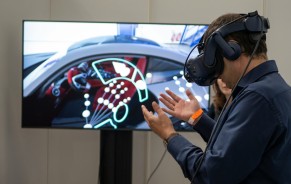The rise of cameraphone since the early times had somehow anticipated the modern DLSRs we use today. The first portable digital camera in the predecessors list is most certainly the Fuji DS-1P from 1988, and the latter, the Game Boy Camera that received the title "world's smallest digital camera" from Guinness World Records.
The accessory to Game Boy was plugged into the cartridge slot and captured photos with 256 x 224px resolution and 4 black levels, without color. The camera came with a built-in image editor that a gave a future glimpse of Snapchat's filters, and animation that HTC Zoe resembled in the early days, according to GSM Arena.
Years later, digital photography landed on phones and became a major player in the rise of cameraphone. The Sony Ericsson T68i introduced camera as an external add-on, and was more advanced than the Game Boy camera as the camera offered 640 x 480px resolution and enabled color photos.
Despite the impressive rise of cameraphone, an external camera was still a less preferred option. The Nokia 7650 from 2002 took a bold to become the first to feature an integrated camera, followed by multiple models such as Nokia's 6600 and 7600, as well as Neonode N1.
Consequently, in 2003 during the rise of cameraphone, the selfie camera made its official debut through Sony Ericsson Z1010 and Siemens U15, which started the race for more pixels, for the sake of photos and videos. It wasn't long until the first megapixel camera phones joined the rise of cameraphone in 2004, which includes Nokia 3230, Samsung D500, and Sony Ericsson S700 amongst others, according to Tekno Class.
Things picked up from there as Sony Ericsson and Nokia started seeing each other as rivals. Now, despite the recent developments, those early days of exciting innovation and novelty in the rise of cameraphone are still to be missed.


















